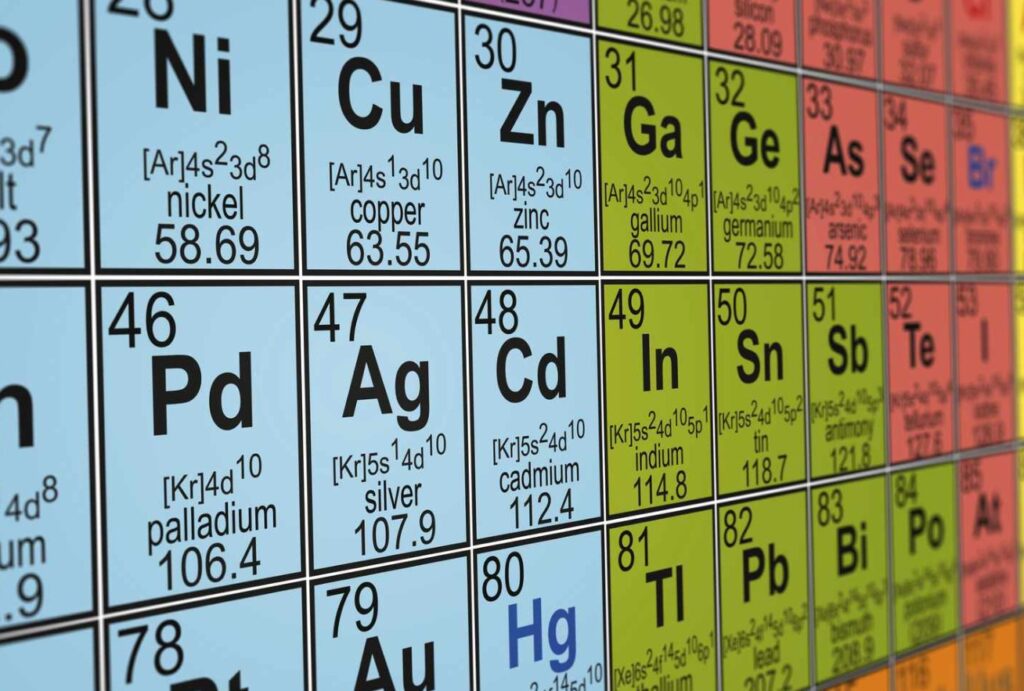When it comes to understanding the periodic table, many people are curious about the organization of elements, particularly the alphabetically first gas on the periodic table. This seemingly trivial fact has intrigued not only scientists but also crossword enthusiasts and educators. In this article, we will delve into the details of this gas, its importance, and its relevance in various contexts.
The Alphabetically First Gas on the Periodic Table
The alphabetically first gas on the periodic table is Argon. Argon, represented by the chemical symbol Ar, is a noble gas and belongs to Group 18 of the periodic table. With an atomic number of 18, Argon is a colorless, odorless, and inert gas under standard conditions.
Why is Argon Alphabetically First?
In the periodic table, elements are arranged in a specific order based on their atomic number, but when it comes to alphabetical listing, Argon comes first among the gases. This is because the letter “A” precedes other letters used in the names of gaseous elements like Neon, Helium, or Xenon.
Chemical Properties of Argon
Argon is a noble gas, meaning it has a complete outer electron shell, making it highly stable and unreactive under most conditions. Here are some key chemical properties:
- Atomic Number: 18
- Atomic Weight: 39.948 u
- Electron Configuration: [Ne] 3s² 3p⁶
- Melting Point: -189.34°C
- Boiling Point: -185.85°C
Physical Properties of Argon
Argon’s physical properties make it distinct and useful in various applications:
- State at Room Temperature: Gas
- Color: Colorless
- Density: 1.784 g/L at 0°C and 1 atm
- Solubility in Water: 33.6 mg/L at 20°C
- Odor: Odorless
Applications of Argon
Argon is widely used across different industries due to its inert nature. Some of the primary applications include:
- Welding: Argon is commonly used as a shielding gas in welding processes like TIG (Tungsten Inert Gas) and MIG (Metal Inert Gas) welding. It prevents the oxidation of the metal being welded by creating an inert atmosphere around it.
- Lighting: Argon is used in incandescent and fluorescent light bulbs to prevent the filament from deteriorating quickly. It is also used in neon lights to produce a blue glow.
- Medical Applications: Argon lasers are use in various medical procedures, including eye surgeries and skin treatments.
- Food Preservation: Argon is sometimes use to displace oxygen in food packaging, thereby extending the shelf life of perishable goods.
Argon in Crosswords and Puzzles
The fact that Argon is the alphabetically first gas on the periodic table often makes it a popular answer in crossword puzzles. Clues like “alphabetically first gas on the periodic table nyt crossword” or “alphabetically first gas on the periodic table crossword clue” frequently lead to the answer “Argon.”
Argon’s Place in Education
In educational settings, Argon is frequently reference when teaching the periodic table, particularly when introducing the concept of noble gases. It’s a prime example of a chemically inert element, making it an ideal candidate for demonstrating the principles of atomic structure and electron configuration.
Alphabetically First Gas on the Periodic Table Crossword
For crossword enthusiasts, understanding that Argon is the alphabetically first gas can be a useful tidbit of knowledge. This has led to its frequent appearance in crosswords, particularly in publications like The New York Times. The clue “alphabetically first gas on the periodic table nyt” or variations of it are common in such puzzles, where Argon is the sought-after answer.
Comparative Table of Noble Gases
To better understand Argon’s position and characteristics among the noble gases, here’s a comparative table:
| Property | Argon (Ar) | Helium (He) | Neon (Ne) | Krypton (Kr) | Xenon (Xe) | Radon (Rn) |
|---|---|---|---|---|---|---|
| Atomic Number | 18 | 2 | 10 | 36 | 54 | 86 |
| Atomic Weight (u) | 39.948 | 4.0026 | 20.1797 | 83.798 | 131.293 | 222 |
| Density (g/L) | 1.784 | 0.1786 | 0.9002 | 3.749 | 5.894 | 9.73 |
| Melting Point (°C) | -189.34 | -272.2 | -248.59 | -157.36 | -111.7 | -71 |
| Boiling Point (°C) | -185.85 | -268.93 | -246.08 | -153.22 | -108.13 | -61.7 |
Conclusion
Argon, the alphabetically first gas on the periodic table, is more than just a fun fact for trivia or crosswords. Its stable, inert nature makes it invaluable in various industrial applications, from welding to lighting and even medical procedures. Understanding Argon’s properties and uses provides insight into the critical role this noble gas plays in both everyday life and specialized fields. Whether you’re solving a crossword with clues like “7 alphabetically first gas on the periodic table” or exploring the periodic table in a chemistry class, Argon is a key element worth knowing.
